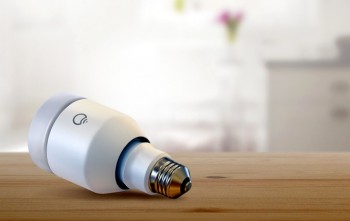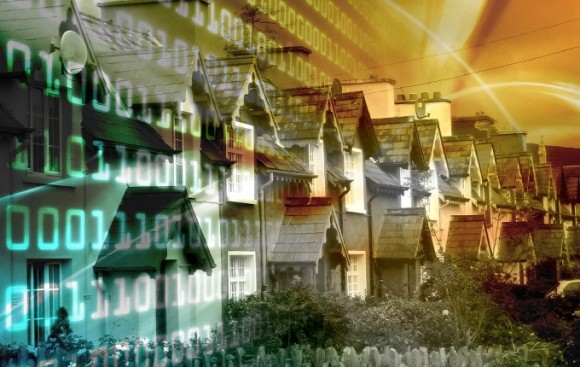5:00am – Turn heater on
5:15am – Water plants
5:25am – Turn on coffee machine
5:29am – Turn on table lamp, open blinds
5:30am – Wake up
Sounds wonderful, doesn’t it? Half an hour extra sleep? Waking up to an already warm house? It would certainly make those cold winter mornings much easier. Scratch that; not having to wait for the coffee machine to warm up would make any morning easier. But this isn’t the future; this isn’t a science fiction pipe dream.
This is now.
We’re living in a time where home automation is becoming simple and affordable, where it is moving out of the realm of the geeky hacker and into the mainstream consumer space. And you might be surprised by what is already possible. The success of LIFX Labs, an Australian smart lighting start-up, is certainly a sign of these times. LIFX’s smart bulbs had a humble start, and were initially funded via a Kickstarter campaign. Now, less than two years later, they are available for purchase in Harvey Norman nationwide.
The success of LIFX Labs, an Australian smart lighting start-up, is certainly a sign of these times. LIFX’s smart bulbs had a humble start, and were initially funded via a Kickstarter campaign. Now, less than two years later, they are available for purchase in Harvey Norman nationwide.
LIFX Labs’ CEO, Phil Bosua, had a hunch the bulbs would resonate: “I always thought that if people liked the concept as much as I did, it would be really successful, but I was never sure until we launched on Kickstarter”.
LIFX’s colouring-shifting bulbs connect directly to a WiFi network and are remotely controlled via a smartphone app. Users are able to pick from 16 million different colours to illuminate their house or office with, as well as switch lights on or off. Key in their appeal was making them attractive to “people who aren’t geeky” noted Bosua.
Bosua partly attributes interest in smart home automation to technological advancement. “Computers have gotten small and cheap enough that we can put them in lots of different devices. Technology has caught up with what we always thought the connect home would be.”
 “We’re starting to live like the Jetsons, and it’s now affordable for anyone to do so,” said Daniel Hall, product manager and WeMo guru at Belkin. Belkin’s WeMo product range includes motion sensors, light switches and switches for power outlets. These are, of course, all WiFi enabled, and controlled via a smartphone app.
“We’re starting to live like the Jetsons, and it’s now affordable for anyone to do so,” said Daniel Hall, product manager and WeMo guru at Belkin. Belkin’s WeMo product range includes motion sensors, light switches and switches for power outlets. These are, of course, all WiFi enabled, and controlled via a smartphone app.
The WeMo Switch sits right atop your existing power outlet, and gives users the ability to remotely turn anything plugged into it on or off. The WeMo Light Switch provides a similar function but for home lighting. After a quick setup, these devices can be triggered from anywhere using mobile internet.
Furthering this potential is the ability to set rules on the device. These can be as simple as “I want my heater to turn on at 5am every weekday morning, and off again at 9am”. Most importantly, as with the devices themselves, this functionality is simple to setup.
In the development of the WeMo range, Hall said two questions were asked: “Who doesn’t have a wireless router?” and “who doesn’t have a smartphone?”
These two almost universal tools could be considered responsible for the growth and innovation in the home automation sector. The widespread availability of smartphones and WiFi means a potential user already has most of the pieces to the puzzle, contrasting strongly with “non-smart” home automation systems that had to be installed professionally and were often prohibitively expensive.
 Affordability and accessibility are cornerstones of the WeMo platform. Users can convert as little as one light switch or power point at a time, allowing them to dabble without committing to converting their entire house. Hall believes that these low barriers of entries have definitely contributed to WeMo’s success in the market.
Affordability and accessibility are cornerstones of the WeMo platform. Users can convert as little as one light switch or power point at a time, allowing them to dabble without committing to converting their entire house. Hall believes that these low barriers of entries have definitely contributed to WeMo’s success in the market.
Tight integration with online service IFTTT means that events can be triggered by the weather, or even by a Tweet. You might configure your watering system or pool pump to not turn on if it’s forecast to rain, or you might tell it to only run automatically if your phone’s GPS data says you’re not home.
Using WeMo motion sensors, movement can be set as a trigger for an event too. In Hall’s WeMo filled house, lights and lamps only turn on when they detect motion, and turn off when there’s none. Perfect when you have kids who just can’t remember to turn off the lights. But Hall’s personal favourite WeMo trick is a rule that when he plugs his phone into a charger after 9:30 at night, all the lights in the house automatically turn off.
While most smart home automations require their own app, according to Alvin Lee, a senior analyst at Telsyte, it is believed that “within the next two years, there will be a significant opportunity for “smart home hubs” aimed at unifying the large number of disparate connected devices under one master control system”.
One of these potential “smart home hubs” will be Apple’s HomeKit, an addition to the upcoming version of iOS. HomeKit is a “new framework for communicating with and controlling connected devices”. Rather than having a separate app for each smart appliance, the aim of HouseKit is to consolidate these functions in one place. Apple has stated that users will be able to trigger these functions via voice command, making the future even more accessible.
“Siri, turn off the lights” could be a phrase we’re saying within months.
 While we don’t have to worry about Siri or our smart appliances achieving sentience and attempting to kill us all, a la HAL9000 or Skynet, there are still some security concerns. Sieng Chye Oh, a researcher at security software manufacturer ESET, stressed the importance of strong passwords on both WiFi and devices.
While we don’t have to worry about Siri or our smart appliances achieving sentience and attempting to kill us all, a la HAL9000 or Skynet, there are still some security concerns. Sieng Chye Oh, a researcher at security software manufacturer ESET, stressed the importance of strong passwords on both WiFi and devices.
“The convenience of these devices is undeniable,” said Oh, noting potential customers should make sure the manufacturer has a good track record in providing updates and patches to vulnerabilities in both the hardware and any relevant apps.
Oh did however joke that hackers and criminals probably aren’t too interested in what you’re watching on your smart television, or in wreaking havoc with your smart bulbs.
“People don’t tend to be afraid of technological change due to issues with security, but because it often forces them to relearn the steps required to complete a task,” added David Tisdall, a serial tech entrepreneur and networking specialist. “We saw a similar situation with the advent of VoIP, where people were afraid to abandon their landlines. Now 20 per cent of the nation has cut that cord.”
As exciting as all of this is, we’re only beginning to touch on the potential of smart houses. Networking equipment manufacturer Cisco is envisaging a future where everything is connected.
Imagine a scenario where your morning meeting is pushed back by half an hour, but your train is running 15 minutes late. You always drive to the train station, but your car is running low on fuel; a refill takes 5 minutes. This is all communicated to your alarm clock, giving you an extra 10 minutes of sleep. Your alarm clock then tells the heater and coffee machine to both turn on 10 minutes later.
Won’t that be truly something?
This article originally appeared on CyberShack. You can follow CyberShack on Twitter here.



